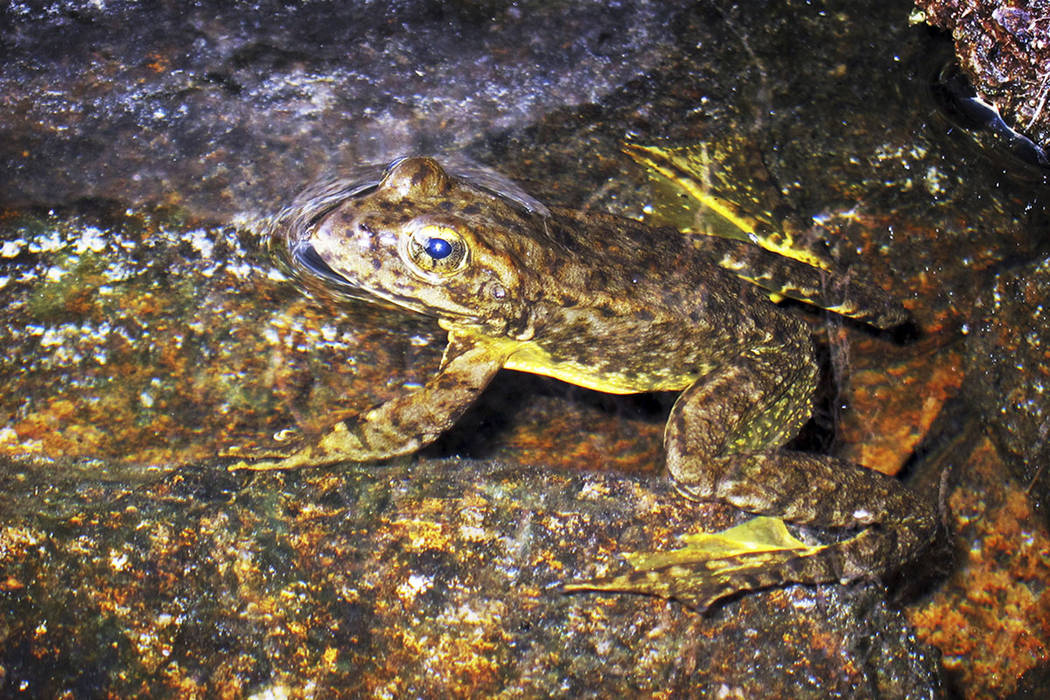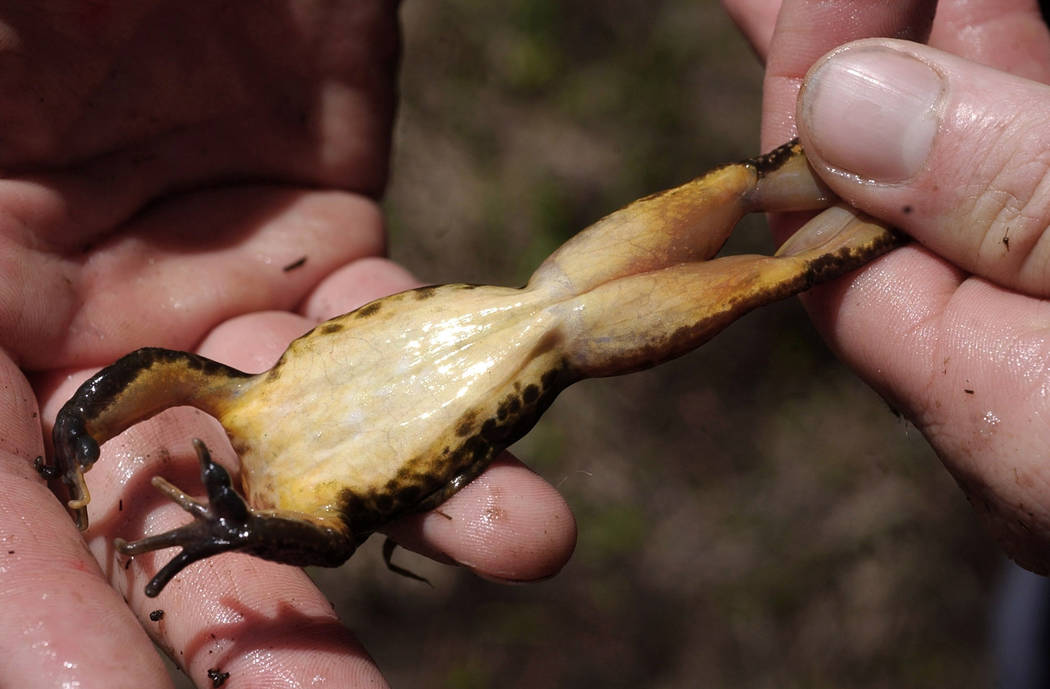Scientists help endangered California frogs get shot at life
FRESNO, Calif. — Endangered California frogs are getting an immunity boost from scientists who are scooping them up from remote Sierra Nevada ponds and sending them to big city zoos for inoculation, giving them a fighting chance to beat extinction, officials said Wednesday.
The experiment aims to rescue the 3-inch mountain yellow-legged frog — named for distinctive coloring under its hind legs. Scientists use nets to capture diseased tadpoles and then fly them by helicopter from their natural range deep within the Sequoia and Kings Canyon National Parks.
They are next driven over 200 miles across the state to the San Francisco and Oakland zoos, where they are inoculated against a ravaging disease partly blamed for wiping them out from much of their historical range in the Sierra, scientists said.
Roughly 385 frogs have been treated at the zoos and returned after two years as healthy, young adults to their native lakes and ponds.
Aquatic ecologist Danny Boiano of the Sequoia and Kings Canyon National Parks, who has led the three-year project, said it appears to be paying off. Next, his team will study their frogs to determine if it’s working.
“It’s experimental at this point,” he said. “It’s going to take several years to find out if it works.”
The frog holds a key place in the Sierra Nevada food chain. Scientists say they feed on insects, then snakes and birds eat the frogs.
The species once thrived in such masses that people could not walk the shores of lakes and ponds in the mountain range without stepping on them, according to historical accounts, which add that with each step, dozens more launched into the water.
Their decline began a century ago with the introduction of non-native trout for sport fishing that gobbled up the tadpoles. Starting in the 1960s, the frog suffered a second blow from an invasive disease, called the chytrid fungus.
The fungus is blamed for the decline and extinction of more than 200 amphibians worldwide, scientists say.
Today, the mountain yellow-legged frog is missing from 90 percent of its historical region in the Sierra. Both state and federal wildlife authorities have listed it as endangered.
At neighboring Yosemite National Park, the frog’s population has made a significant recovery in part because rangers stopped stocking some lakes with non-native fish, park officials say.
Inoculating the frogs in Sequoia and Kings Canyon National Parks costs roughly $175,000 a year, which Boiano said mostly goes to pay his team of 10 seasonal biologists doing field work.
“Just like vaccinating people, we are jump-starting their disease-fighting immune systems,” said Jessie Bushell, director of conservation at the San Francisco Zoo. “Letting the population completely die out is not a good option.”



















